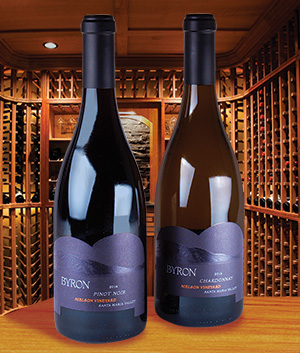 The Poetry of Byron
The Poetry of Byron
Fill the goblet again! for I never before
Felt the glow which now gladdens my heart to its core;
Let us drink!—who would not?—since, through life’s varied round,
In the goblet alone no deception is found.
—Lord Byron (1788-1824), English poet
Designated in 1981, the Santa Maria Valley AVA is located in the northernmost part of Santa Barbara County, just east of Santa Maria city. The east–west orientation of the wide, open valley means cool winds and fog flow in freely from the Pacific Ocean, settling most noticeably in lower-lying areas. This cool maritime influence lengthens the growing season (among the longest in the world), and contributes to the eventual sugar/acid balance in Santa Maria Valley’s wines.
The first Santa Barbara County vineyard established in the 20th century was planted in 1964 by Uriel Nielson; it has been Byron Winery’s estate vineyard for over 30 years. 18 miles inland from the Pacific, this historic benchland vineyard serves as a model for Santa Barbara’s viticultural experimentation and sustainable farming methods (It is California Sustainable Winegrowing Certified).
Nielson was largely replanted in 1991, and it has since been enhanced with considerable investment. A new 4,000-barrel-capacity winery has been built, and in 2014, Byron returned to its focus on single-vineyard Chardonnay and Pinot Noir, presenting this unusual opportunity to review two very different wines from the same vineyard.
Nielson Vineyard Chardonnay 2014
This light-golden-hued wine hails from the original “Wente” clone, which at Byron was planted in 1964 and again in 1999. The harvest was fermented in barrel with full malolactic fermentation, and then aged in the same barrels (French oak, 54% new) for 15 months. The resulting wine features aromas of butter and mango. The palate is full-bodied and has a rich mouthfeel, with hints of apricot, lemon, grapefruit, and minerals.
Try this Chardonnay with roasted halibut with romesco and pine nut butter; Dungeness crab salad with mango vinaigrette; or seared sea scallops with coconut risotto.
Nielson Vineyard Pinot Noir 2014
Three Pinot clones were used for this wine. They came from the east end of the property, which is very sandy with outcroppings of shale and limestone. The fruit was aged in 35% new French oak.
This expression of the ever-obstinate pinot noir is rich ruby-hued in the glass, with mouth-watering aromas of dark fruits, brown spice, smoke, and dried thyme Those scents carry on to the the flavor, especially wild blackberry. The whole shebang is supported by good acidity and astringent tannins.
Serve this wine with seared Muscovy duck breast with saffron risotto; sausage-stuffed calamari; or smoked pork tenderloin with vanilla jus.
Top of page: https://winervana.com/blog/

 This Is the House
This Is the House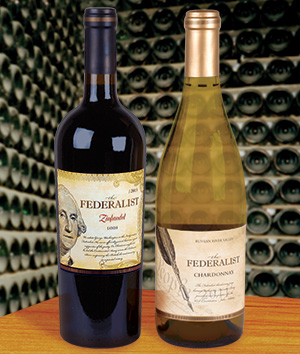 We the People
We the People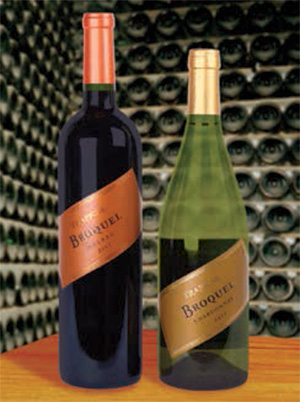 No Llores Por Mi, Argentina
No Llores Por Mi, Argentina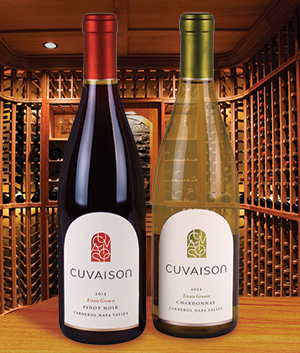 Mean, Green,
Mean, Green,
 Négociant [nay-goh-SYAHN] is the French word for “dealer” or “merchant,” and is used in wine circles to denote an individual or company that negotiates, sells, and ships wine as a wholesaler. Traditionally, négociants have often handled all aspects of wine production except the actual farming, including purchasing grapes, making the wine, blending, bottling, and shipping. In some transactions, there is another intermediary: a courtier or “wine broker,” who helps establish the price paid by a négociant to a small producer. Some of the better known French négociants are Barton & Guestier, Calvet, Cordier, Moueix, and Sichel.
Négociant [nay-goh-SYAHN] is the French word for “dealer” or “merchant,” and is used in wine circles to denote an individual or company that negotiates, sells, and ships wine as a wholesaler. Traditionally, négociants have often handled all aspects of wine production except the actual farming, including purchasing grapes, making the wine, blending, bottling, and shipping. In some transactions, there is another intermediary: a courtier or “wine broker,” who helps establish the price paid by a négociant to a small producer. Some of the better known French négociants are Barton & Guestier, Calvet, Cordier, Moueix, and Sichel.
 Come Sail Away
Come Sail Away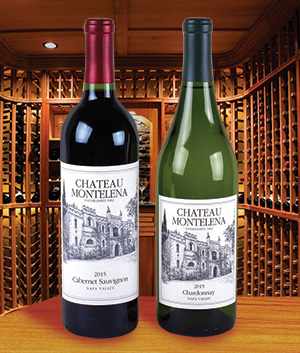 Can’t Keep ‘em Down on the Farm After They’ve Seen Puhree
Can’t Keep ‘em Down on the Farm After They’ve Seen Puhree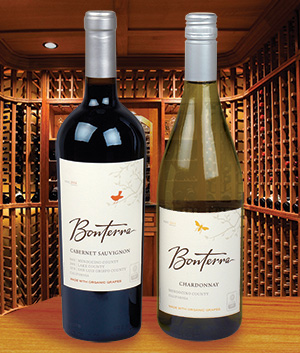 Bonterra Vineyards has been a pioneer in organic farming in California. The vines were planted in 1987, and the first wines were released in 1992, long before organic products were widely available in America. Bonterra believes that organic grapes produce the purest expressions of the varietals and land on which they are farmed.
Bonterra Vineyards has been a pioneer in organic farming in California. The vines were planted in 1987, and the first wines were released in 1992, long before organic products were widely available in America. Bonterra believes that organic grapes produce the purest expressions of the varietals and land on which they are farmed.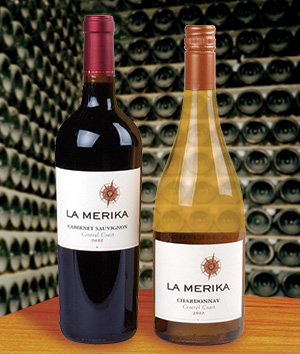 I Took a Trip Down to
I Took a Trip Down to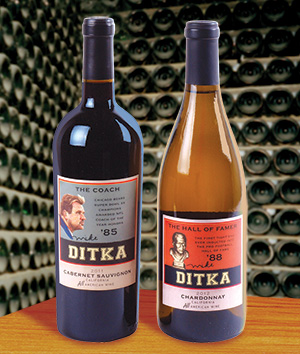 Da Wine uh Da Coach
Da Wine uh Da Coach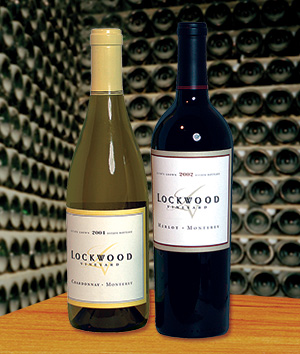
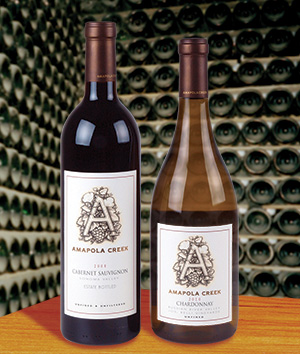 After a legendary career of over 45 years toiling in the vineyards of Sonoma County, Richard Arrowood opened his final winery, Amapola Creek, in 2005. Amapola is Spanish for “poppy,” and the creek that bears the name runs through the estate. When in bloom, the golden poppies line the creek and offer a lovely sight with the vineyards and mountains in the background.
After a legendary career of over 45 years toiling in the vineyards of Sonoma County, Richard Arrowood opened his final winery, Amapola Creek, in 2005. Amapola is Spanish for “poppy,” and the creek that bears the name runs through the estate. When in bloom, the golden poppies line the creek and offer a lovely sight with the vineyards and mountains in the background.